Who Is This? (Not Who You Think)
 In a 1978 interview for Guitar Player magazine, this guitar-slinger said the following:
In a 1978 interview for Guitar Player magazine, this guitar-slinger said the following:
> He created his own guitar by mixing and matching parts from Fender instruments.
> Part of the creation was chiseling out a spot so he could put a humbucker in the guitar.
> The pickups were directly mounted to the wood.
> He also ended up with a custom pickguard and a custom bridge arrangement.
> His effects board was a piece of plywood.
> He used a phaser and an Echoplex.
Of course you’re thinking it’s…Eddie Van Halen. Nope:
Steve Morse.
Weird, eh? That’s from a recent post on the entire interview – never before been published on Jas Obrecht’s Music Archive site. Jas used to write for Guitar Player. Anyhow, it was funny to read how much Steve and Eddie thought alike…to a point.
Obviously these two amazing players went in different directions, and at the time were already going in those different directions. Ed was all about jet-fueled blues rock, and Steve was doing this crazy fusion of all different types of music, which he still does.
Here are the gear-related deets from that interview, which is worth a full read if you’re a Morse fan or if you want to get a flavor of what it was like to be a long-haired musician in the southeastern U.S. back then. Sounds like it was pretty traumatic.
Edited for brevity, all of this is Steve speaking:
Guitar: Pickups
It’s got a neck that I’ve had for about 12 years. I bought it when I was just startin’. It was a Stratocaster…. Just for reasons of sound, I came across an old Telecaster and switched the body – just put my neck on the body of the Telecaster. I said, “Wow! It fits.†All I had to do was add one little shim to it. So I said, “Well, if I can do this, then….†So I got courageous.
So there I was with a Telecaster with a Strat neck, and the bridge wouldn’t tune up. I was used to the Strat – individual pieces – and the first pickup squealed. So it was two problems at once. So the first thing I did was put a Tune-o-matic in and saw off the part of the metal plate that holds just the bridge. So it still had the squeaky pickup in it, the feedback from the pickup. But I had a bridge I could adjust, and that was cool.
And I had to add a tailpiece while I did that. I found it in an old music store – it’s for a 12-string. It was real short and had 12 holes in it, which is interesting also, because usually I can have an E string going through one of the extra holes, curled up and taped down. So if I break an E string, it’s already there. I just pull it out and it’s only about an eighth of an inch away from the regular E string, so it will go over the saddle with no problem. That makes for quicker changes.
I couldn’t get a heavy enough sound without feeding back, so I had to put a humbucking [pickup] in. And I started at the easiest place, which is by the neck. You just take a chisel and a hammer and start pounding it out, splice it in. And that was cool, but I still couldn’t get highs.
So the next thing was add a Fender humbucking pickup [full size, not stacked]. They’d just introduced it. I went down to the store and they said, “Hey, we got this new pickup in.†I put it in, and I really liked it.
And then I took the rhythm pickup and moved it right next to the Fender humbucking pickup, because I said, “Here’s this pickup, and I’m not even using it,†and I figured out a way I could chisel it out and fit it in there. And then for the fourth pickup…[was] an original Strat pickup. [A Strat] was my first guitar, so I had to have that sound.
So I had four pickups. And there was room – just barely – for this thing that Bob Easton had devised…. He had a pitch-to-voltage convertor that would just take any high-impedance signal and change it to voltage….
It took so long to get the money [that] by the time I did have it, Bob Easton had developed the Slavedriver. And so we got one of the first ones, as soon as we could do it. What it is, it’s a little six-pole pickup – you can see the poles. It’s almost totally separated, with the wire for each going to this fancy connector that stops at the guitar. It turned out there was just enough room to squeeze that between the bridge and my lead pickup.
[Talking about the pickguard] I’d already mounted everything [pickups and switches] in the guitar, solid – like screwed it down, the way you’re not supposed to do it, probably, instead of mounting it to the pickguard like in a factory installation. So everything was crewed down into the guitar at the right height and everything.
– End of Part 1 of 2 –
Category: Edward Van Halen, Steve Morse, Strat, Telecaster

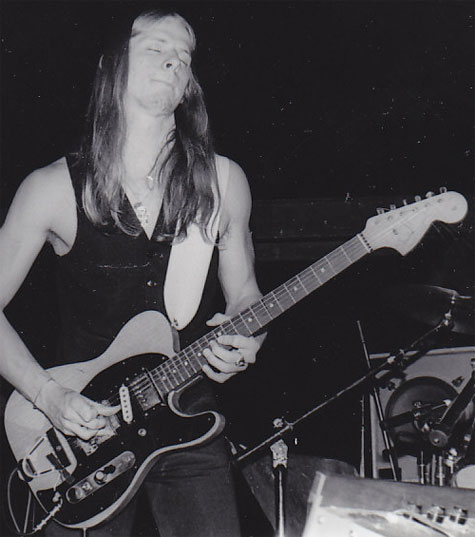




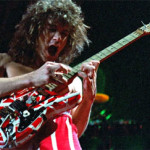

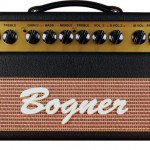
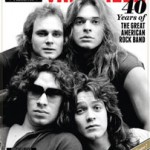
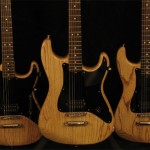


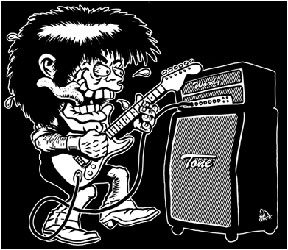

Who Is This? Well, it’s the same guy who uses POPLAR in his guitars!
Some can remember Ritchie Fiegler’s “scientifically conducted, double-blind tests” in some Fender Factory? – Give 10 players of varying styles similar looking black guitars made of ash, alder and poplar. What is the overall favorite? Poplar, for its combination of lightness, balanced tone and sustain.
PS nº 1- Really, really good post! Tks!
PS nº 2- “entire interview” link did not work for me.
I believe Brother Wayne Kramer of the MC5 was building his own “Frankenstrats” going back to the ’60’s. Somebody correct me if I’m wrong, but I’ve seen photos of him from that era playing a Strat with an HSH pickup configuration.
I thought Wayne Kramers Strat was a S*H-S configuration?